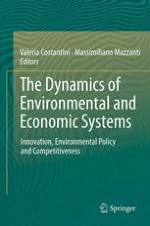2013 | OriginalPaper | Chapter
3. Theoretical Approaches to Dynamic Efficiency in Policy Contexts: The Case of Renewable Electricity
Authors : Pablo Del Río, Mercedes Bleda
Published in: The Dynamics of Environmental and Economic Systems
Publisher: Springer Netherlands
Activate our intelligent search to find suitable subject content or patents.
Select sections of text to find matching patents with Artificial Intelligence. powered by
Select sections of text to find additional relevant content using AI-assisted search. powered by
